Let's talk Chinese Shar-Peis
Let’s be honest, when people think “Chinese Shar-Pei” they think “wrinkled dog”. And while the breed is certainly recognisable by the deep folds of skin running the length of their bodies – especially in puppyhood – the Chinese Shar-Pei is so much more. They are loyal and intelligent, and highly independent. Great guard and watch dogs, the Chinese Shar-Pei is said to enjoy the company of people more than other dogs. They definitely need early socialisation to head off the tendency. Either way, their humans sure do make up a substantial fan club.
Official name: Chinese Shar-Pei
Other names: Cantonese Shar-Pei, Chinese fighting dog
Origins: China
Tendencia a babear
{score 0 out of 5}Nivel de muda de pelo:
{score 0 out of 5}Nivel de energía
{score 0 out of 5}Compatibilidad con otras mascotas
{score 0 out of 5}¿Clima cálido?
{score 0 out of 5}Apto para vivir en departamento
{score 0 out of 5}¿Mascota familiar? *
{score 0 out of 5}Puede quedarse solo
{score 0 out of 5}
| Macho | Hembra |
|---|---|
| Altura | Altura |
| 44 - 51 | 44 - 51 |
| Peso | Peso |
| 20 - 27 | 20 - 27 |
| Adulto | |
|---|---|
| 1 to 7 years | |
| Madurez | Adulto mayor |
| 7 to 10 years | From 10 years |
| Bebé | |
| Birth to 2 months | |
Tendencia a babear
{score 0 out of 5}Nivel de muda de pelo:
{score 0 out of 5}Nivel de energía
{score 0 out of 5}Compatibilidad con otras mascotas
{score 0 out of 5}¿Clima cálido?
{score 0 out of 5}Apto para vivir en departamento
{score 0 out of 5}¿Mascota familiar? *
{score 0 out of 5}Puede quedarse solo
{score 0 out of 5}
| Macho | Hembra |
|---|---|
| Altura | Altura |
| 44 - 51 | 44 - 51 |
| Peso | Peso |
| 20 - 27 | 20 - 27 |
| Adulto | |
|---|---|
| 1 to 7 years | |
| Madurez | Adulto mayor |
| 7 to 10 years | From 10 years |
| Bebé | |
| Birth to 2 months | |
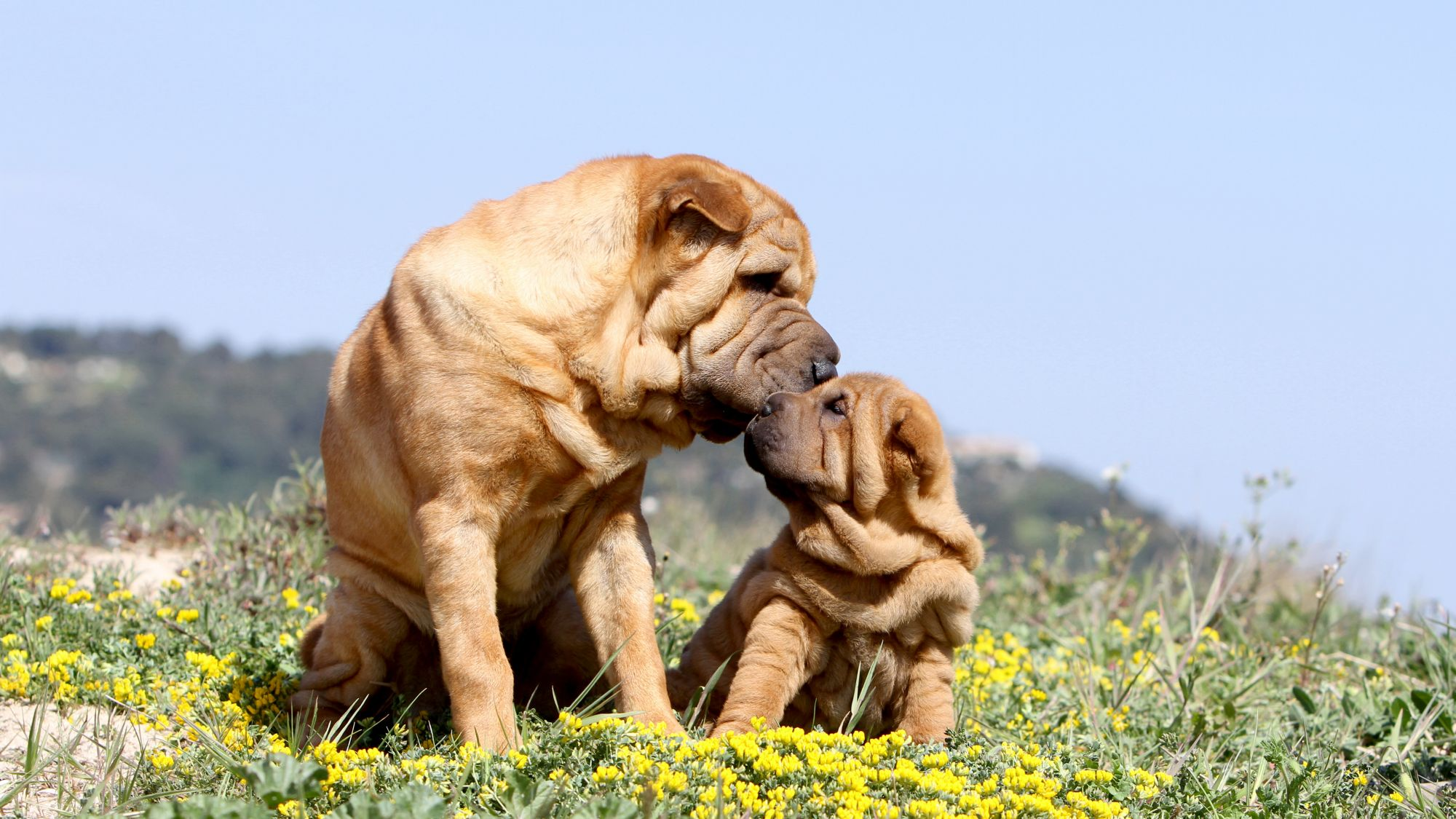
Get to know the Chinese Shar-Pei
All you need to know about the breed
No discussion of the delightful Chinese Shar-Pei would be complete without bringing up the breed’s famed deep wrinkles, folds, and suit-two-sizes-too-big loose skin. Chinese Shar-Pei puppies are one of the most adorable sights on Earth, though they do outgrow – or grow into – their skin as they get bigger. Let’s not forget their remarkable dark, blue-black tongue, either.
In an amazing feat of adjectives, the Chinese breed standard states the Chinese Shar-Pei has clam-shell ears, butterfly nose, melon-shaped head, grandmotherly face, water buffalo neck, horse's buttocks and dragon's legs. Far be it for us to contradict such an extraordinary description of a most wonderful dog.
Chinese Shar-Peis are a very old breed (though that’s not the reason for the wrinkles), initially bred to hunt, guard and herd. As such, they are renowned protectors of home and loved ones. However, while they can be tolerant of children, it is important to discern when a Chinese Shar-Pei is being playful and when they are showing their more dominant side, a distinction a younger child can’t necessarily make.
Kind and loyal, Chinese Shar-Peis also have very strong characters, a bit of a stubborn streak, and definitely require experienced owners who are familiar with the breed and training of this type of dog. You will need to establish leadership early on; the Chinese Shar-Pei might not respect the owner who doesn't do so.
However, for the right owner, the Chinese Shar-Pei is a delight, an affectionate, independent dog with a one-of-a-kind personality.
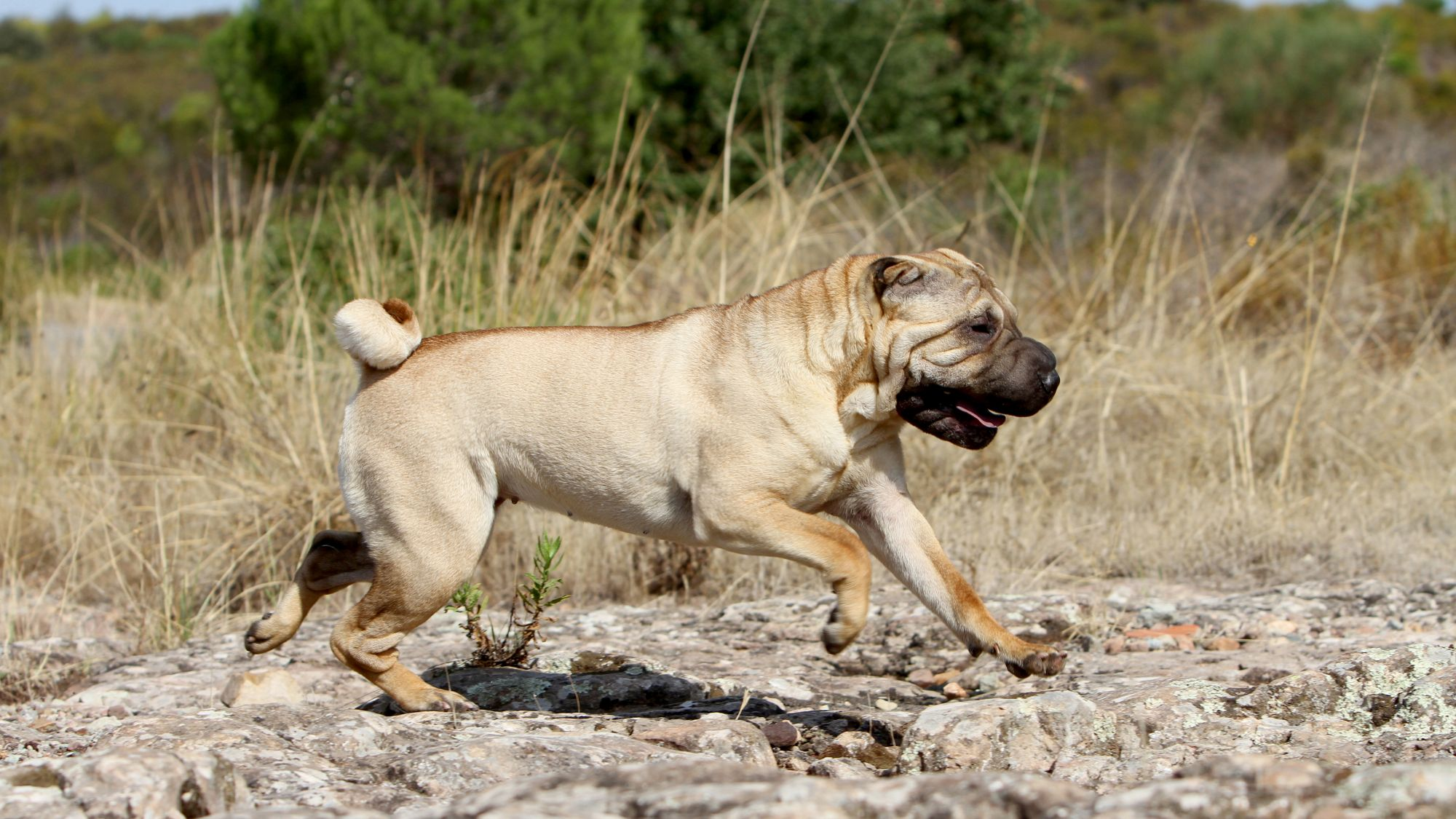
2 facts about Chinese Shar-Peis
1. Meat or bone?
As a result of their breeding history – the breed was very nearly extinct in the 1970s – there are two different versions of Chinese Shar-Peis, with two different types of muzzles. A Chinese Shar-Pei with a heavily padded muzzle is known as a “meat mouth”. If their mouth is less padded, it is known as a “bone mouth.” The latter is the more traditional of the two. Both are equally magnificent.
2. It serves a purpose
The Chinese Shar-Pei’s loose, wrinkled skin served a smart purpose in nature: It meant that rival dogs had a hard time getting a firm grip on them. Can’t hurt what you can’t actually catch. Their coarse coat played a role too—it didn’t feel good in the mouth. “Shar-Pei” actually translates from the Chinese as “sandpaper skin”.
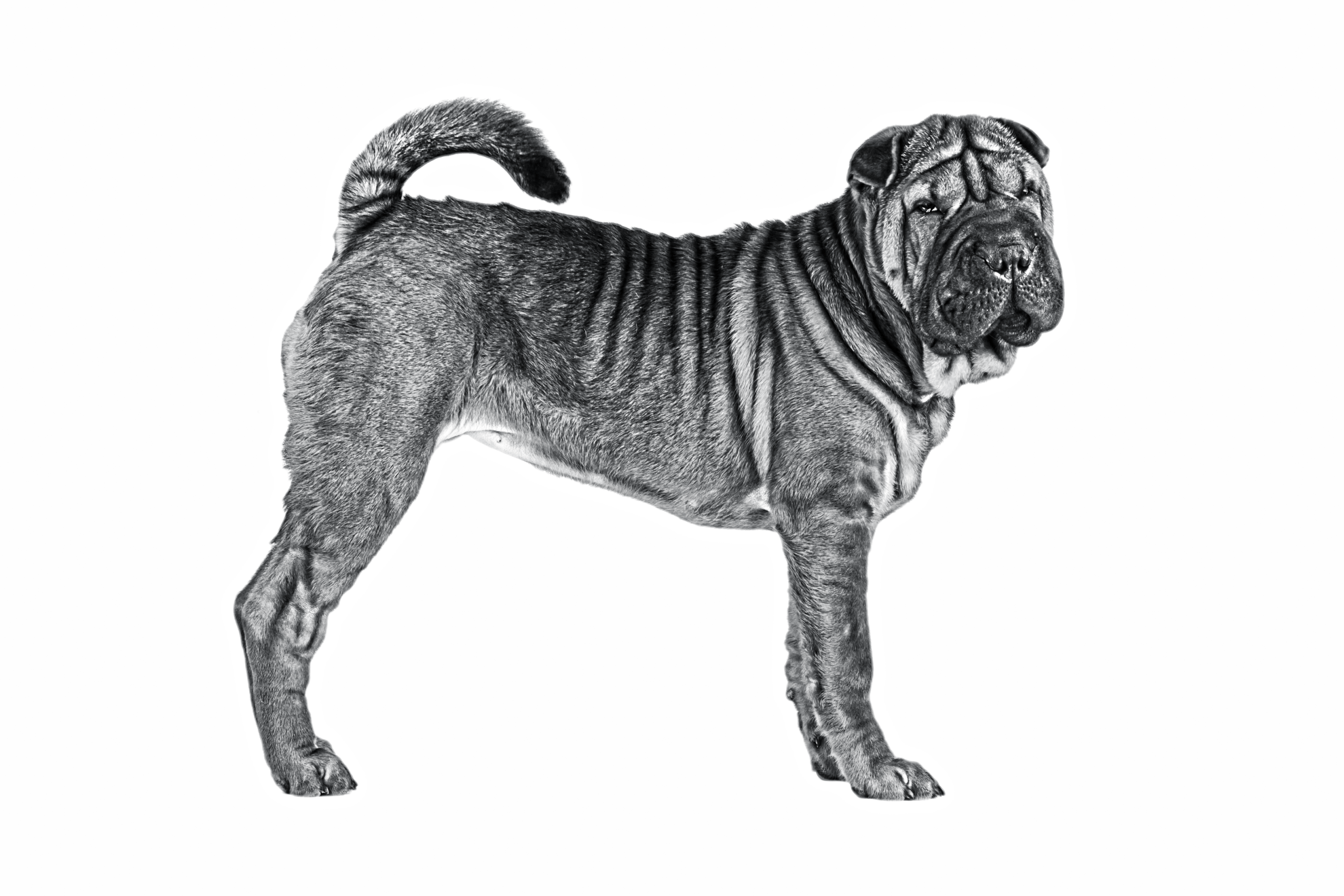
History of the breed
While the Chinese Shar-Pei’s evolution spurs much debate among historians, the breed resembles statuettes of dogs found in China dating back to the Han Dynasty (202 BC to 220 AD). Some believe the modern breed descends from these ancient dogs, along with the Chow Chow (the Chinese Shar-Pei’s closest canine relative).
Fast forward to the 19th century, when Western voyagers witnessed the Chinese Shar-Pei being used by locals for dog fighting, unimaginatively dubbing them Chinese Fighting Dogs. At that time, they had less wrinkles and folds than the breed we know now.
In any case, by the 20th century, China’s political situation led to the near-extinction of the Chinese Shar-Pei by the 1970s. In 1978, the Guiness Book of World Records named the Chinese Shar-Pei as the world’s rarest breed, with only 60 remaining. Chinese Shar-Pei lovers owe a huge debt of gratitude to Hong Kong businessman and breeder, Matgo Law. It is thanks to him that the modern-day Chinese Shar-Pei was saved. He made noise, insisting the rest of the world step in, even enlisting the American Kennel Club (AKC). The resulting attention led to increased demand for the Chinese Shar-Pei from overseas. By 1985, around 350 Chinese Shar-Peis were registered with the UK Kennel Club, with AKC recognition coming in 1992.
In addition, Matgo Law’s Chinese Shar-Pei, “Down-Homes Sweet-Pea”, is an ancestor of practically every Chinese Shar-Pei that exists today.
From head to tail
Physical characteristics of Chinese Shar-Peis
1.Head
2.Colouring
3.Body
4.Skin
5.Tongue

Things to look out for
From specific breed traits to a general health overview, here are some interesting facts about your Chinese Shar-Pei
Skin in the game
The Chinese Shar-Pei can be susceptible to canine atopic dermatitis (CAD), a chronic, genetic skin disease. And their folds increase their risk of something called ‘fold dermatitis’. Keep your pet’s extra skin clean and dry – when damp, those beloved folds provide a comfy place for bacteria and yeast to thrive – to help prevent problems. Chinese Shar-Peis are also at an increased risk of demodicosis, an inflammatory disease caused by an excessive proliferation of mites in hair follicles. If you notice redness, itching, or anything untoward, your vet will be able to administer the right treatment. All of these skin issues require expert care.
Eye issues can abound
As a brachycephalic breed – meaning dogs with a more pushed-in face and snout, including deep-set, oval eyes sunken into their plush fur – the Chinese Shar-Pei can be prone to certain eye disorders. One of these is entropion, in which the eyelid rolls inward, irritating the eyeball as well as ectropian, the reverse (the skin rolls outward)—one symptom is your Chinese Shar-Pei rubbing or pawing at their eyes. The good news is that both can be corrected surgically. Glaucoma can also be a problem. Symptoms of glaucoma include sensitivity to light, winking spasms, redness or any other changes in your dog’s eyes. Any sudden onset of symptoms should be immediately investigated with your vet. When it comes to brachycephalic breeds, choose a dog with features that aren't over-exaggerated, and always adopt from a responsible breeder.
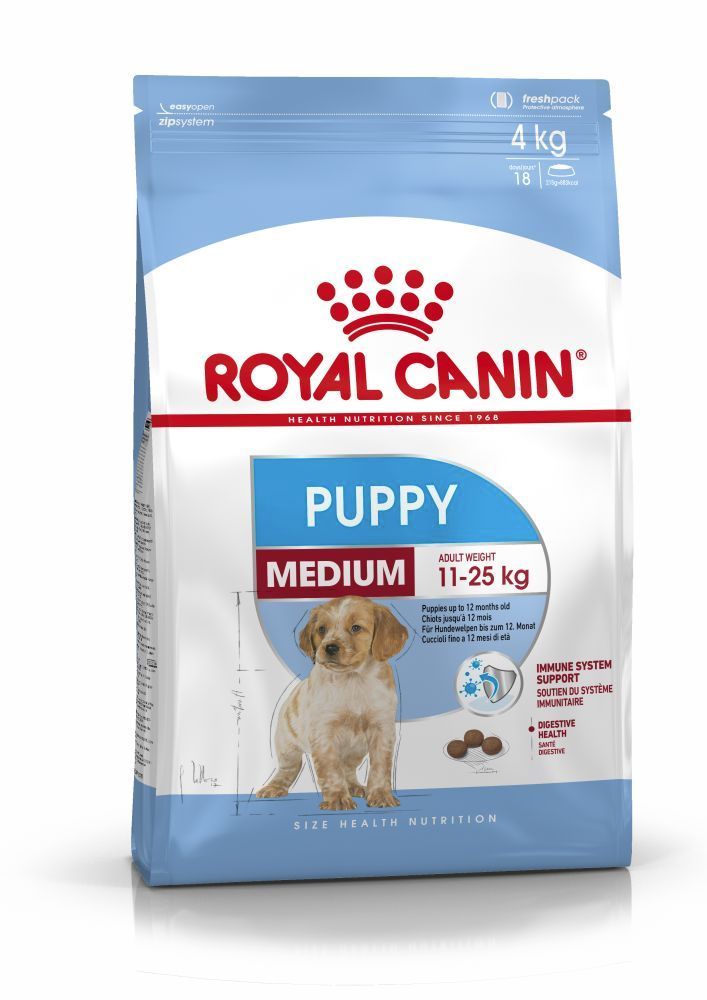
When choosing food for a Chinese Shar-Pei, there are many factors to consider: Their age, lifestyle, activity level, physiological condition, and health including potential sickness or sensitivities. Food provides energy to cover a dog’s vital functions, and a complete nutritional formula should contain an adjusted balance of nutrients to avoid any deficiency or excess in their diet, both of which could have adverse effects on the dog.
Clean and fresh water should be available at all times to support good urinary regularity. In hot weather and especially when out exercising, bring water along for your dog’s frequent water breaks.
Energy intake may also have to be adapted to the climatic conditions. A dog that lives outdoors in winter will have increased energy requirements.
The following recommendations are for healthy animals. If your dog has health problems, please consult your veterinarian who will prescribe an exclusively veterinary diet.
A Chinese Shar-Pei puppy’s requirements, in terms of energy, protein, minerals, and vitamins, are much greater than those of an adult dog. They need energy and nutrients to maintain their body, but also to grow and build it. Until they are 12 months old, a Chinese Shar-Pei puppy’s immune system develops gradually. A complex of antioxidants – including vitamin E – can help support their natural defences during this time of big changes, discoveries, and new encounters. Their digestive functions are different from an adult Chinese Shar-Pei’s, too: Their digestive system is not mature yet so it’s important to provide highly-digestible proteins that will be effectively used. Prebiotics, such as fructo-oligosaccharides, support digestive health by helping balance the intestinal flora, resulting in good stool quality.
Similarly, a puppy’s teeth – starting with the milk teeth, or first teeth, then the permanent teeth – are an important factor that needs to be taken into account when choosing the size, shape, and texture of kibble. This short growth phase also means high energy needs, so the food must have a high energy content (expressed in Kcal/100g of food), while concentrations of all other nutrients will also be higher than normal in a specially-formulated growth food. It is recommended to split the daily allowance into three meals until they are six months old, then to switch to two meals per day.
Throughout their life, it is important to avoid feeding Chinese Shar-Peis human foods or fatty snacks. Instead, reward them with kibble taken from their daily meal allowance, and strictly follow the feeding guidelines written on the package in order to prevent excessive weight gain.

The main nutritional goals for adult Chinese Shar-Peis are:
Maintaining an ideal body weight by using highly-digestible ingredients and keeping the fat content at a sensible level.
Promoting optimal digestibility with high-quality protein and a balanced supply of dietary fibre.
Helping to preserve the health and beauty of the skin and coat with the enriched addition of essential fatty acids (especially EPA and DHA), essential amino acids, and B vitamins.
To help support their natural defences, a formula enriched with an antioxidant complex and containing mannan-oligosaccharides is recommended.
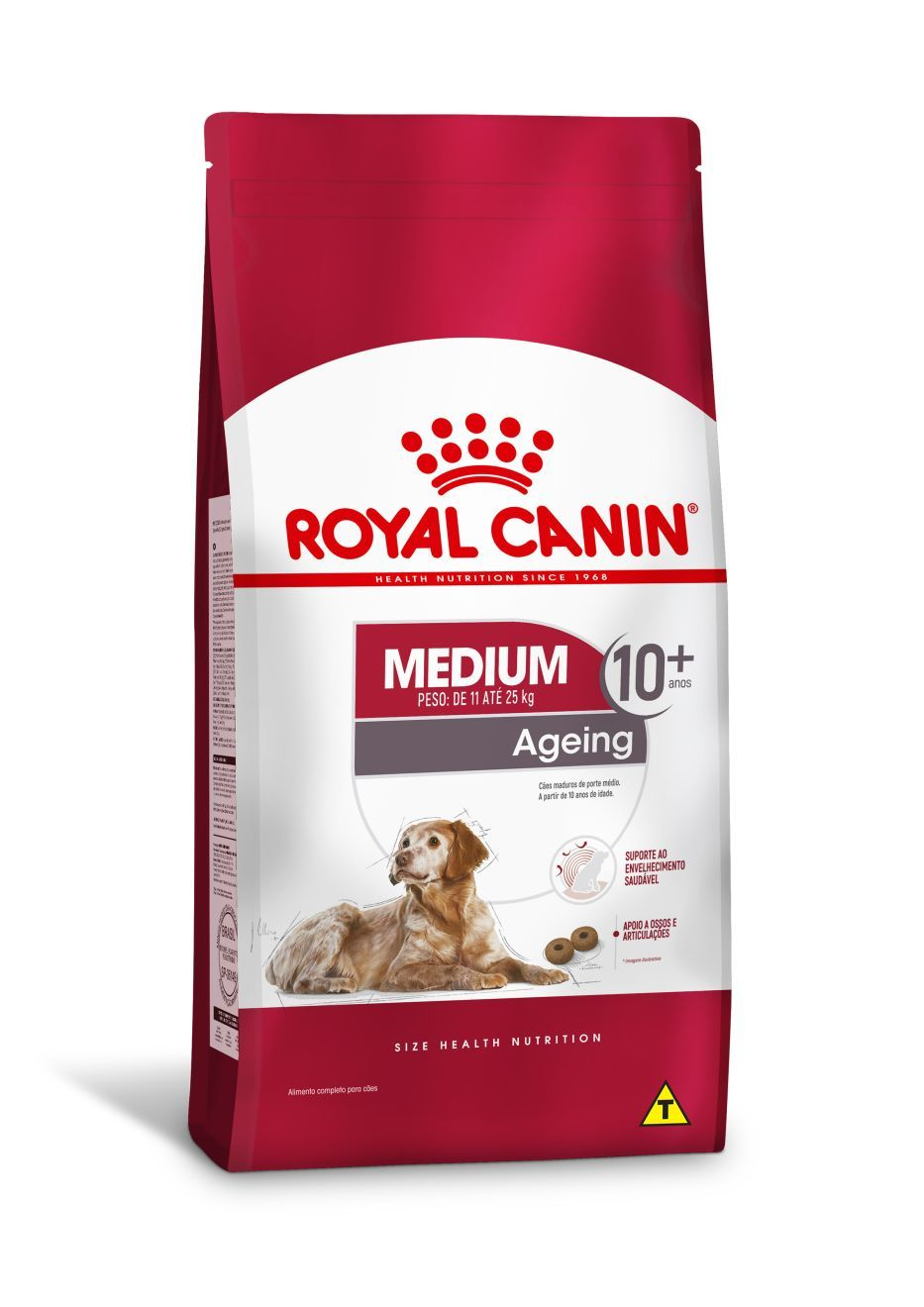
After 7 years old, Chinese Shar-Peis start facing the first signs of ageing. A formula enriched with antioxidants will help maintain their vitality, and specific nutrients, such as chondroitin and glucosamine, will help maintain healthy bones and joints. Ageing is also accompanied by the modification of digestive capacities and particular nutritional requirements, so food for older Chinese Shar-Peis should have the following characteristics:
Higher vitamin C and E content. These nutrients have antioxidant properties, helping to protect the body’s cells against the harmful effects of the oxidative stress linked to ageing.
High-quality protein. Contrary to a widely held misconception, lowering the protein content in food brings little benefit in limiting kidney failure. In addition, older dogs are less efficient at using dietary protein than younger dogs. Reducing the phosphorous content is a good way of slowing down the gradual deterioration of kidney function.
A higher proportion of the trace elements iron, zinc, and manganese to help maintain the good condition of the skin and coat.
A higher quantity of polyunsaturated fatty acids to help maintain the quality of the coat. Dogs can normally produce these fatty acids, but ageing can affect this physiological process.
As they age, dogs increasingly suffer from teeth problems. To ensure they continue to eat in sufficient quantities, the shape, size and hardness of their kibble needs to be tailored to their jaw.
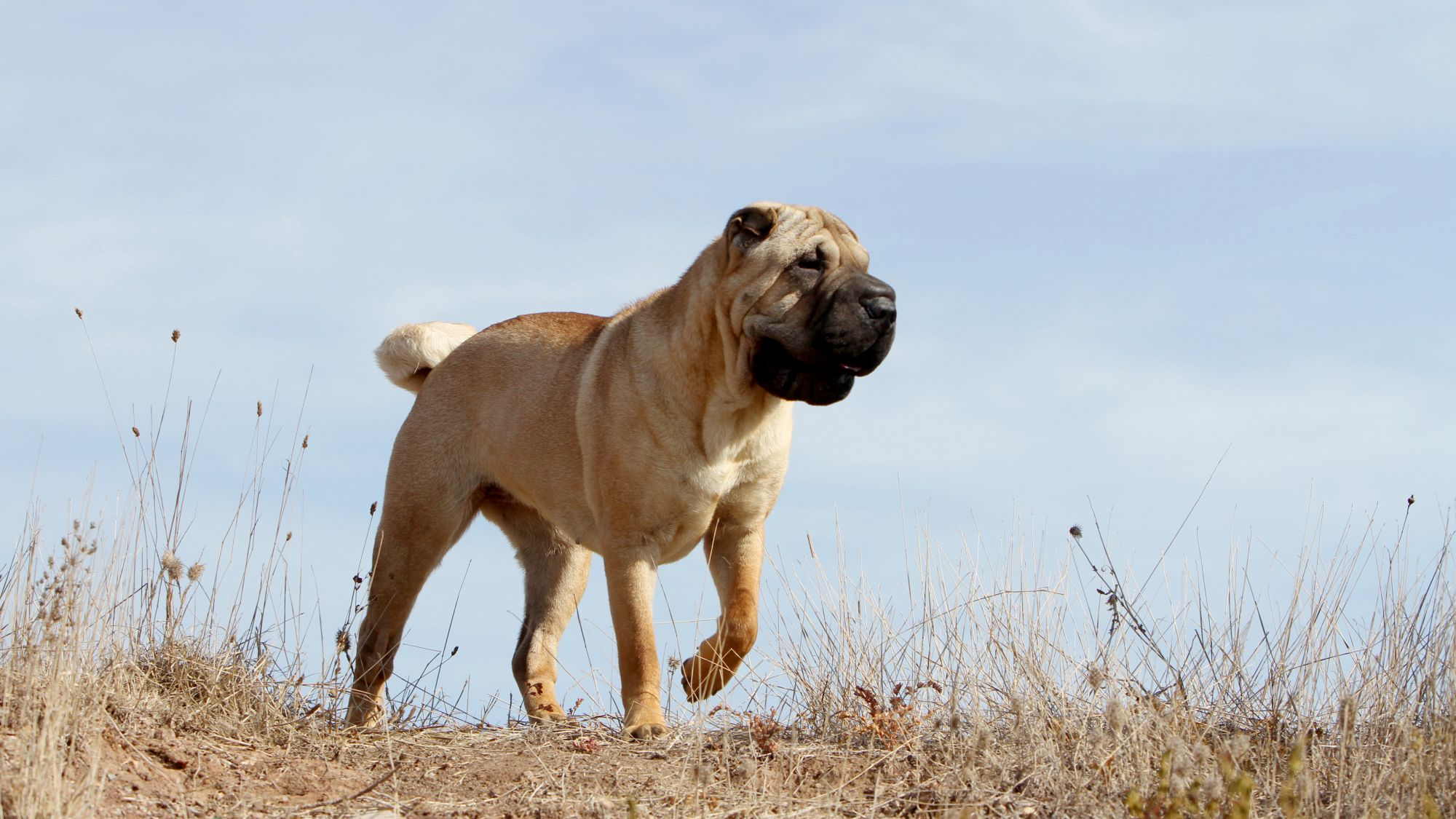
Caring for your Chinese Shar-Pei
Grooming, training and exercise tips
Chinese Shar-Peis are known to be one of the cleanest breeds around, noticeably absent of any canine odours and keeping themselves well-groomed. However, your Chinese Shar-Pei will still need a little human-provided grooming to keep them healthy and looking their best! A once-a-week brush-through will evenly distribute natural oils and remove any debris. Nails should be trimmed and ears cleaned weekly. Bathe only when necessary.
When it comes to exercise, Chinese Shar-Peis are pretty low-maintenance. An hour or so a day should suffice, though your dog will gladly accompany you on longer walks, hikes or adventures. The Chinese Shar-Pei, originally bred to hunt and herd, still retains a strong prey drive—keep them on the lead or they’ll head off at the first whiff of something interesting.
Training a Chinese Shar-Pei is a more complicated endeavour. First-time dog owners need not apply, sorry. Smart, willing, sure, but Chinese Shar-Peis can also be headstrong and challenging to any owner that has not shown themselves to be the pack leader (though forceful methods will not yield results). Ideally, you will honour your dog’s independent nature while still instilling rules. Many Chinese Shar-Peis are not friendly towards dogs they don’t know – aggressive, even – so early, consistent training is key. Socialisation and puppy training classes when your Chinese Shar-Pei is young are almost a mandatory for a well-adjusted, obedient pet.
7/7
All about Chinese Shar-Peis
Suggested Breeds
Read more on this topic
- Veterinary Centers of America https://vcahospitals.com/
- Royal Canin Dog Encyclopaedia. Ed 2010 and 2020
- Banfield Pet Hospital https://www.banfield.com/
- Royal Canin BHN Product Book
- American Kennel Club https://www.akc.org/
Like & share this page